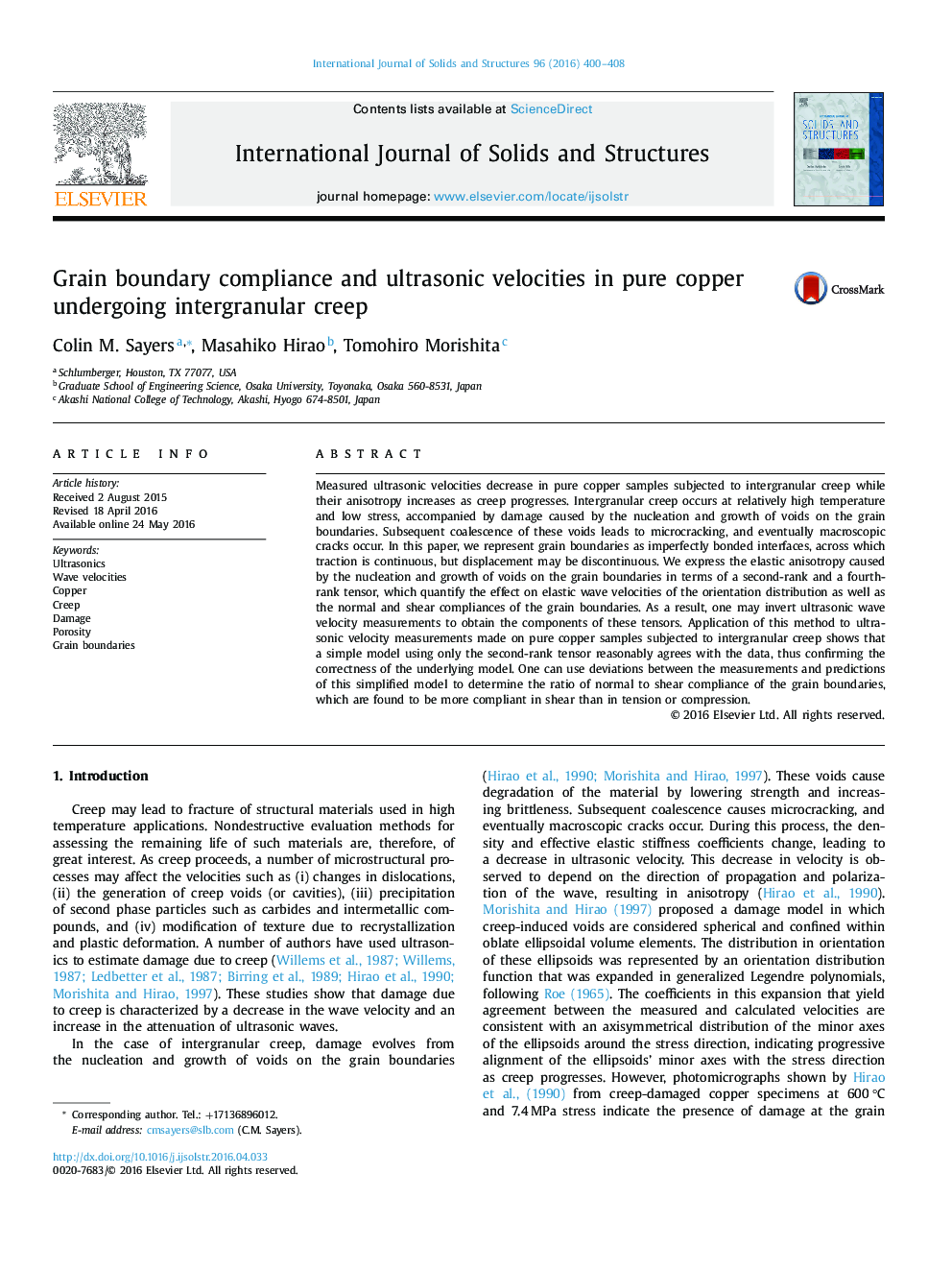| Article ID | Journal | Published Year | Pages | File Type |
|---|---|---|---|---|
| 277088 | International Journal of Solids and Structures | 2016 | 9 Pages |
Measured ultrasonic velocities decrease in pure copper samples subjected to intergranular creep while their anisotropy increases as creep progresses. Intergranular creep occurs at relatively high temperature and low stress, accompanied by damage caused by the nucleation and growth of voids on the grain boundaries. Subsequent coalescence of these voids leads to microcracking, and eventually macroscopic cracks occur. In this paper, we represent grain boundaries as imperfectly bonded interfaces, across which traction is continuous, but displacement may be discontinuous. We express the elastic anisotropy caused by the nucleation and growth of voids on the grain boundaries in terms of a second-rank and a fourth-rank tensor, which quantify the effect on elastic wave velocities of the orientation distribution as well as the normal and shear compliances of the grain boundaries. As a result, one may invert ultrasonic wave velocity measurements to obtain the components of these tensors. Application of this method to ultrasonic velocity measurements made on pure copper samples subjected to intergranular creep shows that a simple model using only the second-rank tensor reasonably agrees with the data, thus confirming the correctness of the underlying model. One can use deviations between the measurements and predictions of this simplified model to determine the ratio of normal to shear compliance of the grain boundaries, which are found to be more compliant in shear than in tension or compression.
